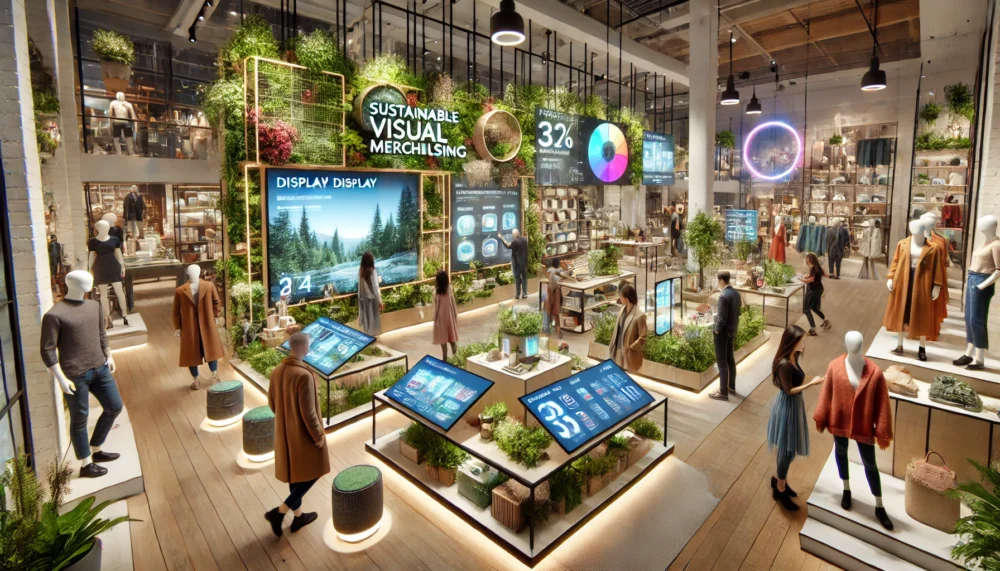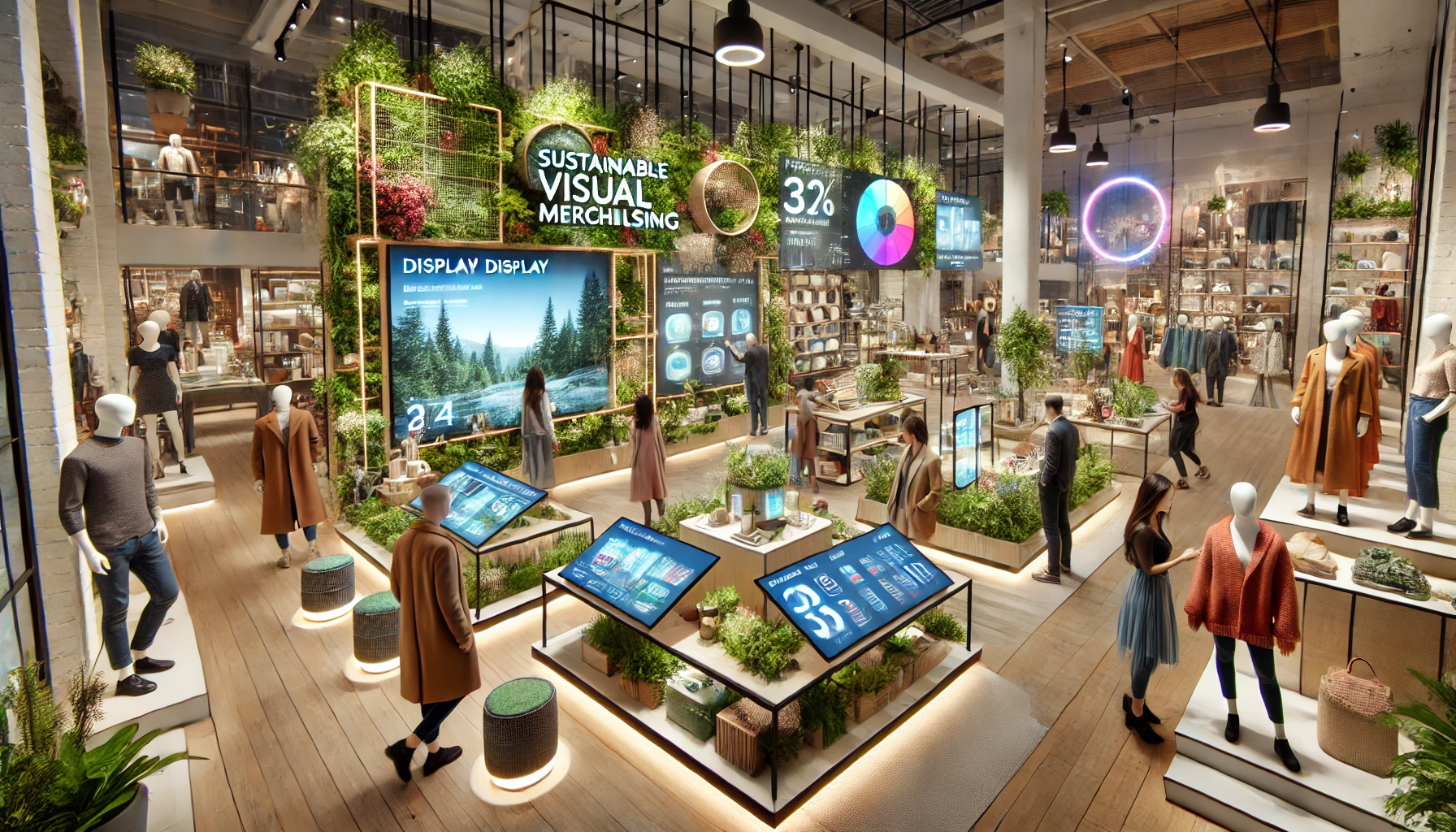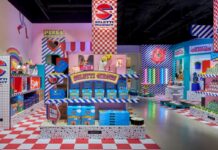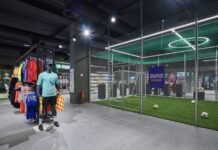As the retail industry evolves, physical display trends are essential for capturing customer attention and driving sales.
In 2024, several innovative trends in visual merchandising and physical displays are set to transform retail environments. Here are five key trends to watch out for.

1. Sustainable Visual Merchandising
Sustainability continues to be a focal point in retail, influencing display trends in 2024. Retailers are increasingly seeking eco-friendly materials and sustainable practices for their visual merchandising efforts. This includes the use of recycled materials, energy-efficient lighting, and modular display units that can be easily reconfigured and reused.
Adopting sustainable practices offers several benefits for retailers. Eco-friendly displays resonate well with environmentally conscious consumers, enhancing brand image and loyalty. Additionally, using energy-efficient lighting and recyclable materials can reduce operational costs over time. Sustainable displays also align with broader corporate social responsibility goals, making them a win-win for businesses and the planet. By integrating sustainability into visual merchandising, retailers can attract a growing segment of eco-aware shoppers and differentiate themselves in a competitive market.
2. Experiential and Immersive Displays
Experiential and immersive displays are revolutionising the retail space by creating memorable and engaging shopping experiences that go beyond traditional setups. Retailers are transforming stores into interactive environments where customers can engage with the brand in unique ways. These displays often incorporate multisensory elements, such as sound, scent, and interactive features, to create a more engaging environment.
The primary benefit of experiential displays is that they create a strong emotional connection between the customer and the brand. These experiences can turn shopping into an event, drawing customers into the store and encouraging them to spend more time exploring. Live demonstrations and workshops can educate customers about products, leading to informed purchasing decisions. Interactive installations provide entertainment and engagement, making the shopping experience enjoyable and memorable. Ultimately, experiential retail helps build brand loyalty and encourages word-of-mouth marketing as customers share their unique experiences with others.
3. Personalisation
Personalisation is becoming a key aspect of physical retail displays. Customised fixtures and displays that adapt to different products and customer preferences can make shopping more engaging and relevant. Retailers are utilising advanced technologies to offer personalised content and recommendations based on individual customer behaviour.
Personalised fixtures enhance the shopping experience by making customers feel valued and understood. These fixtures can display tailored product suggestions, exclusive offers, and interactive content that responds to customer preferences. By providing a bespoke shopping experience, retailers can increase customer satisfaction and loyalty. Personalised displays also help in showcasing products that align with customer tastes, potentially boosting sales and fostering a deeper connection with the brand.
4. Pop-Up Displays
The rise of pop-up shops and flexible retail spaces is another significant trend. These temporary setups allow retailers to test new markets, launch exclusive products, and create buzz without the long-term commitment of a permanent store. Pop-up shops often feature unique, eye-catching designs to attract attention and drive foot traffic.
Pop-up displays offer several advantages for retailers. They provide the ability to keep the store layout fresh and dynamic, attracting repeat customers and increasing foot traffic. Retailers can quickly respond to market trends and consumer demands by adjusting displays to highlight new products or seasonal themes. Pop-up displays also make it easier to implement temporary installations, creating excitement around exclusive products or limited-time offers. Moreover, they allow retailers to experiment with different retail concepts and locations, gaining valuable insights without a significant investment.
5. Omnichannel Integration
Omnichannel strategies that seamlessly integrate online and offline shopping experiences are becoming essential. Retailers are using consistent branding and messaging across all channels, ensuring that digital displays in-store complement online campaigns. This unified approach helps to create a cohesive customer journey, enhancing brand recognition and customer satisfaction.
Integrating omnichannel strategies provides several advantages for retailers. It ensures a consistent customer experience regardless of the shopping channel, which can increase customer trust and loyalty. In-store digital displays can direct customers to online resources, such as detailed product information or customer reviews, enhancing their shopping experience. QR codes and mobile apps allow for easy access to online catalogues and special promotions while shopping in-store. This seamless integration also enables retailers to gather comprehensive customer data, allowing for more targeted marketing and personalised shopping experiences.
In conclusion, 2024 is set to be a year of significant advancements in physical retail display trends. By embracing sustainability, creating immersive and thematic displays, incorporating personalisation, utilising pop-up displays, and enhancing omnichannel integration, retailers can enhance the shopping experience and stay competitive. Staying ahead of these trends is crucial for maintaining a competitive edge in the rapidly evolving retail landscape. You can experience what is shaping the future of retail at the VM and Display Show on 9-10 April 2025 at the BDC London. This event is an essential platform for discovering the latest innovations and networking with industry professionals, ensuring you stay at the forefront of retail display trends.



















